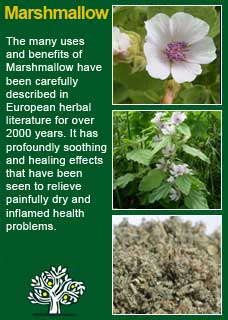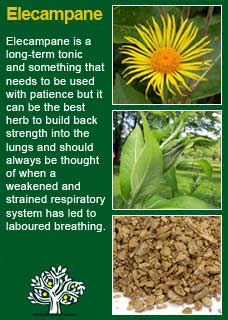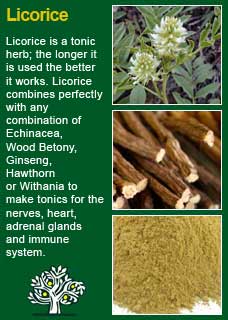
|
|
||||
| Our Pages ABOUT CONSTITUTIONAL MEDICINE
|
In herbal medicine we use the flowers and leaves of Mullein, a tall plant that grows and lives for two years. Mullein produces long, thick, hairy leaves in a rosette at its base and then in its second year shoots up a tall spike bearing yellow flowers that can reach to over 3 meters.
Ancient cultures around the world considered Mullein a magical protector against witchcraft and evil spirits and, like many such herbs used in magic, Mullein has a long history as a healing plant. Mullein was described as a treatment for ‘old coughs’ by the Greek physician Dioscorides over 2000 years ago and has chiefly been used as a herb for lung problems since well before then till now. Culpeper wrote that gargling Mullein 'easeth toothace and old cough' and, in 19th century Ireland, Mullein was considered a leading remedy for the tuberculosis that plagued many of the population and large amounts of it were cultivated for this particular purpose. Oil of Mullein for ear troubles, or as a chest rub, can be especially beneficial (see a recipe to make Mullein oil at the bottom of the page). Finlay Ellingwood writes of the oil of Mullein for the ears 'the most direct use of this agent is in the treatment of simple uncomplicated cases of deafness, or in the early stages of progressive deafness where the cause is not apparent. In these cases, from, two to five drops in the ear, three or four times each day, will stop the progress of the disease, and will cure many simple cases. In its local influence, it softens and facilitates the removal of hardened secretions, stimulating the nerve structures at the same time. It has positive anodyne (pain-relieving) properties, and is curative in a large number of the ordinary cases of earache in children, acting often more quickly than other and better known agents, and is used with perfect safety, as it has no irritating or toxic properties' Kings Dispensatory writes 'Mullein is demulcent, diuretic, anodyne, and antispasmodic. It is mildly nervine, controlling irritation, and favoring sleep. Upon the upper portion of the respiratory tract its influence is pronounced, particularly where the larynx and trachea are involved; useful in coughs, protracted colds, catarrh, hemoptysis, diarrhoea, dysentery, and piles. It is applicable to dry, hoarse coughs, which occur chiefly at night, as well as to cough associated with an abundant catarrhal discharge. The flowers, placed in a well-corked bottle, and exposed to the action of the sun, are said to yield an excellent relaxing oil. This oil is also valuable in some cases of deafness, used locally for its effect upon the membrane tympani, and upon the secretion of cerumen' Rudolph Weiss M.D writes that 'Mullein has a well-founded reputation as a cough remedy' and that it is 'more effective at relieving sub-acute and chronic bronchitis with a persistent cough than acute inflammations of the mucus membranes' The British Herbal Pharmacopoeia (BHP) describes the actions of Mullein as 'expectorant, demulcent, mild diuretic, topically vulnerary & emollient'. It says it is indicated for 'bronchitis, tracheitis, influenzal cold with respiratory catarrh' and specifically indicated for 'bronchitis with hard cough and soreness'. The BHP recommends a dose of 4-8 grams or by infusion. Thomas Bartram writes that the actions of Mullein include 'a soothing relaxant for irritable respiratory conditions, pectoral demulcent, anti-tussive, mild sedative, diuretic, vulnerary, mild antispasmodic'. He suggests uses for it including 'asthma, deep hollow cough, emphysema, tracheitis, hay fever, wet pleurisy & bronchitis' Bartram recommends a tea from 2-3 tsps of herb steeped for up to 15 minutes and a dose of half to 1 cup of this as neeed. A heaped tsp of Mullein is about 2/3rds of a gram.
There have been no clinical trials with people using Mullein, but it has had some interest in the scientific community nevertheless and has shown antimicrobial activity against strains of Staphylococcus aureus and Trichophyton mentagrophytes. The antibacterial activity of mullein was observed with Klebsiella pneumonia, Staphylococcus aureus, Staphylococcus epidermidis and Escherichia coli. Mullein contains a mucilaginous substance that swells and becomes slippery as it absorbs water, and this may account for at least some of its soothing action, whilst at the same time its saponin-bearing constituents and volatile oils cause it to have a cleansing action on the lungs. ~ The authors, titles and the 'where-and-when' published of over 20 further studies and articles on Mullein are listed in a PDF found here
For some years now, against this proven and safe way of herbalism, there has been a rising tide of excessive caution and scare-mongering in many parts of the world. The same authorities that, not so long ago, decried herbal medicines as ineffectual, have now taken up a different adversarial position; that they are dangerous substances that should only be prescribed by Doctors, who of course have zero training in them. Unfortunately, the same unnecessary fear and worry has crept into many natural health websites and popular publications on herbs. Herbs that we have safely used for thousands of years, that have no reports of adverse reactions in the medical literature despite widespread use by millions of people, are suddenly described as contraindicated because of something that should have been seen as completely unimportant, or at the utmost a merely theoretical concern, such as a laboratory study on one of the herb's constituents to use an all too common example. I wonder sometimes if the writers of such articles feel that the herb will be more deserving of respect if it is thought to be a little bit dangerous, in other words more like a drug than something that has simply come out of the earth and been used by ordinary people for generations beyond count. There is just so much misinformation about herbal medicine on the internet now. Ludicrous claims and cautions abound in equal measure; it seems like one group are trying to make money out of the public whilst the other are busily trying to scare them off. I have to believe that the kind of reader who takes the time to read pages on herbs that are as extensive as this one is much less likely to be swayed by marketers or misinformers. I hope that you will keep your wits about you if you get conflicting opinions from people who have never really got to know these herbs, who have never worked with them, or learned how to use them safely and effectively. I want to remind you that the reason that herbs can never be patented and owned by any individual or corporation is because they are, and always will be, the People's medicine. They belong to all of us and it is my great hope in sharing this work that you will learn how to use them wisely for yourself, and the people you care for. Be safe, but do not be afraid.
The pronounced relaxing, soothing and cleansing properties of Mullein make it one of my top favourite herbs to use for people who are having all kinds of problems with their breathing. If you who are reading this are studying herbal medicine or if you just have your own reasons to want to get to know this plant ally at a much deeper level then I recommend you to make and take some Mullein tea or take a small dose of its tincture and then, with a quiet and attentive mind, observe for yourself how it makes you feel. If you have the dried herb, then I suggest you have a good sniff of the leaves before you add the hot water and see if it does to you what it almost infallibly does to me - which is to give a really good sneeze. In fact if you have something in there that needs cleaning out you might get more than one! This is the first clue to how this herb works, as you drink the tea, or as the tincture penetrates into your system, I think you will be able to feel for yourself just why it was turned to for help for such awful breathing problems as chronic tuberculosis. Mullein has pronounced soothing and relaxing properties. When we get caught with a chronic respiratory condition we nearly always have some debris (even the tiniest amount will do it) stuck somewhere in the lungs or bronchials. The body is intimately aware that it is there and will not cease in its efforts to expel the offending article until it is gone. Mullein combines just enough of an irritant to trigger an increased release of the sneeze or cough reflex and at the same time it calms everything down so it hurts less to get the job done. Further to this, if you would like to learn more about the ancient art of pulse testing, a simple but powerful way to ask the intuitive intelligence of the body for its responses to a herb by feeling the pulse whilst giving a tiny dose by mouth, read here Dosage is such a vital part of the art of herbal medicine that the importance of getting it right can hardly be overstated. That said there are few hard and fast rules as people can and do vary greatly to how much they need for the medicine to work at its best. With Mullein I do not feel that very large amounts are necessary but rather the best effect is to give small doses frequently if required. In tincture form that means I might use just 1 or 2 mls at a time but could use it every few hours if needed. Likewise, a small frequent dose in tea form can be of rapid benefit if taken in regular doses until the condition has shifted (example tea recipe shown below) Mullein combines perfectly with Marshmallow for painful coughs, with Elecampane for deep lung congestion and with Licorice root for soothing the bronchial tract.
This is a tea formula that I've developed over the years for a tonic and cleansing action on chronic respiratory weaknesses such as asthma, chronic bronchitis etc. It's reasonably palatable and highly effective!
*This gives enough for a small jar and quite a few cups of tea. Of course the overall amount can be made larger or smaller as needed by just adjusting the proportions of all the herbs up or down.
Gently heat 1 pint (600mls) of Olive oil in a non-aluminium vessel. Gradually add fresh Mullein flowers to the warm oil until the mixture is saturated. Continue in gentle heat until all the colour fades from the flowers. Press out the oil through some cloth (such as muslin) and bottle. A few drops of the Mullein oil to be put directly into a painful ear (I suggest plugging the ear with a little cotton wool after doing this to keep it in for a good while) Can also be used as a chest-rub for respiratory disorders or as a healer for painful ulcers Much of the information here about the traditional uses of Mullein is consistent with the model of thinking whereby one may treat problem A with plant B. There is value in this approach, especially in how it helps us pass on useful knowledge to one another, but it falls short in one vital area; and that is that people are not all cut from the same cloth! Something that works brilliantly for one person may do less for another -- why is this? Part of the reason is that people vary in their constitutions as to whether they are either hotter or cooler and, at the same time, either dryer or damper. This useful and rather fascinating subject is introduced further here Another big part of using the right herb when it is most needed comes from understanding the need to treat what is going wrong for the person that had led up to their getting a health condition. In this light,Mullein can particularly offer its benefits when a cleansing action is needed in the 'cycle of healing' , more about this here
Please understand that I cannot advise you, including on products or dosage, without seeing you in person in my clinic but for ideas
on how you might find a good herbalist in your area read here |
|
|
© 2011 R.J.Whelan Ltd










